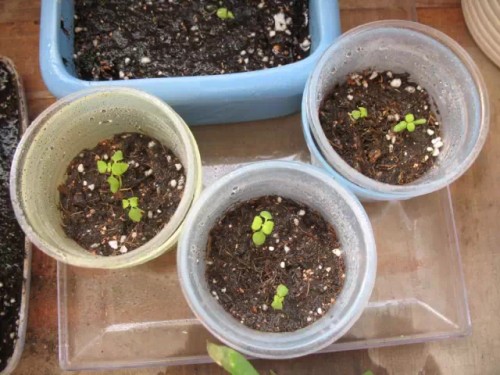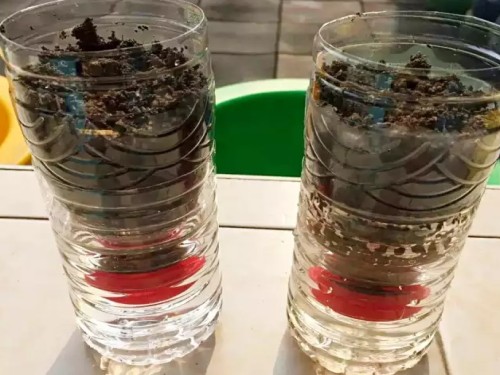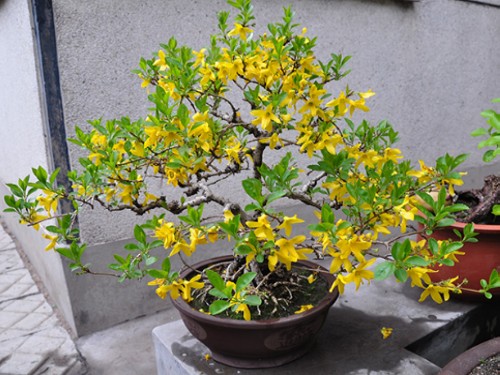The planting method of goldfish grass
Goldfish grass is a flower that blooms in summer and autumn. it is widely planted in Chinese gardens. it is suitable for planting in flower beds and flower borders, especially with zinnia, petunia, marigold, string of red and so on. High-sex varieties can be used as background planting, while dwarf varieties are suitable for coffin rocks or windowsill flower ponds, or edge coffins. This flower can also be used as a cut flower. Two days ago, the editor went out to play and saw a very beautiful plant in bloom. I didn't know it was goldfish until I photographed it and asked relevant professionals. Today, the editor will share it with you.

Growth characteristics:
Annual herbs with red, yellow, pink, purple, white and intermediate colors, with a long florescence. Not resistant to heat, like sunshine, but also resistant to semi-overcast. The pot soil of goldfish grass must be kept moist and the potted seedlings must be fully watered. But the drainage of basin soil should be good, and there should be no stagnant water, otherwise the root system will rot.
Cultivation and reproduction:
It can be sowed in autumn in the south of the Yangtze River, and it is better from September to October. A mixture of peat or rotten leaf soil, culture soil and fine sand for sowing soil. A shallow basin with a caliber of 30 cm is generally used. You can sow seeds in spring and autumn. Autumn sowing is commonly used in the Yangtze River basin, and pot sowing is also used in the north. Autumn sowing seedlings grow stronger and bloom more luxuriantly than spring sowing seedlings. The seedlings emerged from 7 to 10 days after autumn sowing. Soaking seeds with gibberellin solution of 50 mg / L can increase the germination rate of seeds. Spring sowing should be carried out from March to April, and it can also be propagated with stalks.
Sowing method:
Fill the basin with soil before sowing, leaving 1 centimeter or 2 centimeters on the edge of the basin. Then gently flatten the pot soil and then sow seeds. After sowing, it is covered with a thin layer of fine soil, and then gently compacted with a plank to make the seeds closely combine with the soil. After sowing, place the basin in a water basin and let the water permeate upward from the bottom until the whole soil surface is wet, then cover the basin with glass to reduce water evaporation, and finally place the basin in a shady place. After that, it can be managed on a daily basis.
1, temperature: about 7 days can be germinated, do not expose to the sun. The growth temperature of seedlings is 10 ℃ after germination and can be transplanted 6 weeks after emergence. During the watering should be uniform, do not make the basin too dry and wet. Lift the glass at night, make it ventilated, and cover it during the day to prevent moisture from evaporating. It can receive light after germination.
1. Temperature and humidity: goldfish grass is more resistant to cold and semi-shade, can resist the low temperature above-5 ℃, and is easy to freeze to death below-5 ℃. Goldfish grass is resistant to moisture and is afraid of drought. in the process of maintenance and management, watering must grasp the principle of "dry and wet" and spray water every 2 days or so.
2. Transplant: when the seedlings grow 4-5 true leaves, they can be moved to a flowerpot with a diameter of 8-12 cm. The pot soil should be mixed with 7% humus soil and 3 portions of garden soil. The seedlings should be drenched in a spray can until they are thoroughly sprayed. As the seedlings grow up, change the box again and plant it in a flowerpot with a diameter of 20cm to 24cm.
3. Flowering period: usually sowing in late August or September, and flowering from April to May the following year; raising seedlings in cold bed in early spring or sowing in spring and summer can blossom in June-July or September-October, but not as well as autumn sowing, and the flowering period is shorter. After sowing in autumn, it will blossom the following year. After a short cut, it can blossom continuously in late autumn. Those who use cut flowers in winter often sow seeds at the end of summer, cultivate in open field, cool in autumn and move into greenhouse, keep 22 ℃ in daytime and more than 10 ℃ at night in autumn and winter, and blossom one after another in December.
4, watering: usually often loose basin vomiting, appropriate watering, winter control watering, can make the plant growth healthy, many flowers and colorful.
5. Fertilization: attention should be paid to the coordination of nitrogen, phosphorus and potassium in fertilization. Goldfish grass has rhizobium, itself has the effect of nitrogen fixation, in general, there is no need to apply nitrogen fertilizer, an appropriate amount of phosphorus and potassium fertilizer can be increased. During the growing period, combined watering with fermented oil residue water is applied every half a month, and when flower buds appear, it is better to spray 0.1% potassium dihydrogen phosphate solution, and loosen the soil and weed before each fertilization.
6. Pruning: when the seedlings of goldfish grass grow to about 10 cm, they can do coring treatment to shorten the plant height, increase the number of lateral branches and increase the flowers. When pruning, cut off the sick and weak branches, withered old branches and overdense branches, and cut off the flowering branches after each flowering, so as to promote the new branches to sprout and continue to blossom.
Time: 2019-05-25 Click:
- Prev

Impatiens observation Diary-planting and growth process
Spring is a good time to sow impatiens. I planted impatiens seeds on March 15th. Cut the beverage bottle at 1 stroke 3, make a few holes in the bottle cap, fill the bottle bottom with water, fill the bottle mouth with soft soil, plant impatiens seeds and buckle it upside down at the bottom of the bottle to keep the soil moist
- Next

Planting technique of Camellia oleifera
Camellia oleifera is a kind of tree that will change its style and appearance with the change of the four seasons. When the branches and leaves are sparse in spring, Ching Ming Festival will have beautiful yellow flowers before and after; in summer, the leaves will bear fruit; in autumn, the branches and leaves will flourish, showing a green scene; in winter, the withered branches and leaves show a desolate beauty.
Related
- Fuxing push coffee new agricultural production and marketing class: lack of small-scale processing plants
- Jujube rice field leisure farm deep ploughing Yilan for five years to create a space for organic food and play
- Nongyu Farm-A trial of organic papaya for brave women with advanced technology
- Four points for attention in the prevention and control of diseases and insect pests of edible fungi
- How to add nutrient solution to Edible Fungi
- Is there any good way to control edible fungus mites?
- Open Inoculation Technology of Edible Fungi
- Is there any clever way to use fertilizer for edible fungus in winter?
- What agents are used to kill the pathogens of edible fungi in the mushroom shed?
- Rapid drying of Edible Fungi

